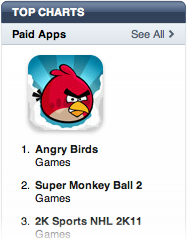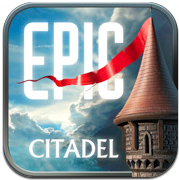
Promotion is a common method employed by retailers to control the situational factors influencing their customers. In stores, companies can entice customers with free gifts, or “buy one get one free” promotions, but in an online store such as Apple’s App Store, there are unique factors that need to be considered when devising a successful promotion.
An interesting trend that has taken over App Store promotion is the “free for one day only” concept. iTunes is very crowded with good apps, and has a limited amount of space with which to promote them. As a result, most customers only see the apps that are featured in the Top 200 list (which is comprised based on sales numbers). In order to get their apps onto these lists, developers have begun changing the price of their apps to free for one day in order to inflate their sales numbers, and then quickly change the price back to normal by the end of the day.
One might think that the sales would drop off again after the app was no longer free, but by generating so much buzz in a single day, the apps are usually able to make it into the Top 200 Paid Apps list (which is separate from the Top 200 Free Apps list) quite easily. Once they have secured a spot in the top 200, the increased visibility generally continues to inflate their sales, and if the app is good they might even make it up into the top 25.
This promotional method may not always be enough, however, as so many developers have begun to exploit it. To ensure the promotion’s success, it is also important to get featured on blogs and websites around the internet. FreeAppADay.com was started up with this exact idea in mind, and has been extremely successful since its inception in 2009. I began following the site on the very first day that it offered a free app, and within weeks it was already putting nearly every app it featured into the best sellers list on iTunes.
This is by no means the only promotional method on the App Store, but it is arguably the most prevalent today. Similar to other online stores, ubiquity is important to App Store promotion, and it is imperative to secure features and reviews on as many blogs and websites as possible. For iPhone games, Touch Arcade and IGN.com have some of the largest readerships, and provide an excellent source of promotion.
I was prompted to write this post by the influx of amazing iPhone games that have seen price drops this week, and I will feature some of the best downloads below. Some of the more premium apps (which cost anywhere from $2.99 to $9.99 regularly) have $0.99 sales instead of going all the way to free, and most of the apps I will list below are currently on sale for $0.99.

I have posted about Osmos previously, and this is because it is one of the absolute best games on the App Store. IGN.com (the largest games reviews site on the internet) ranked it the #1 game on the entire app store in its Top 25 iPhone Games feature, and I couldn’t agree more. In Osmos, you play as a tiny orb floating in space, surrounded by smaller and larger orbs. To win, you must propel yourself into smaller orbs by ejecting mass, and avoid larger orbs that will consume you. The game sets the mood with vibrant visuals and excellent ambient music.
My Rating: 5/5

Peggle is similar to the classic game of Plinko, and has players shooting balls at coloured pegs with the aim of removing all the orange pegs. The game oozes style with its colourful visuals, catchy soundtrack, and memorable characters (each with their own special power-ups and stages). Its high level of polish will come as no surprise to those familiar with its developer, PopCap Games, which has released hits such as Bejeweled, Plants vs. Zombies, and Bookworm. When the final peg is cleared at the end of a level, the game switches to a zoomed-in, slow-motion shot of the ball colliding with the peg, that triggers a shower of fireworks and blasts the triumphant tune of “Ode to Joy” through your headphones. It is truly one of the most satisfying and enjoyable experiences that you can have on the app store.
My Rating: 5/5
Other Notable App Sales:
- Need for Speed Shift is also $0.99, down from its regular price of $6.99. 4.5/5
- Sketch Nation Shooter is on sale for FREE (usually $0.99). 3.5/5
- Spider: The Secret of Bryce Manor is on sale for $0.99 (regularly $2.99). 4/5





